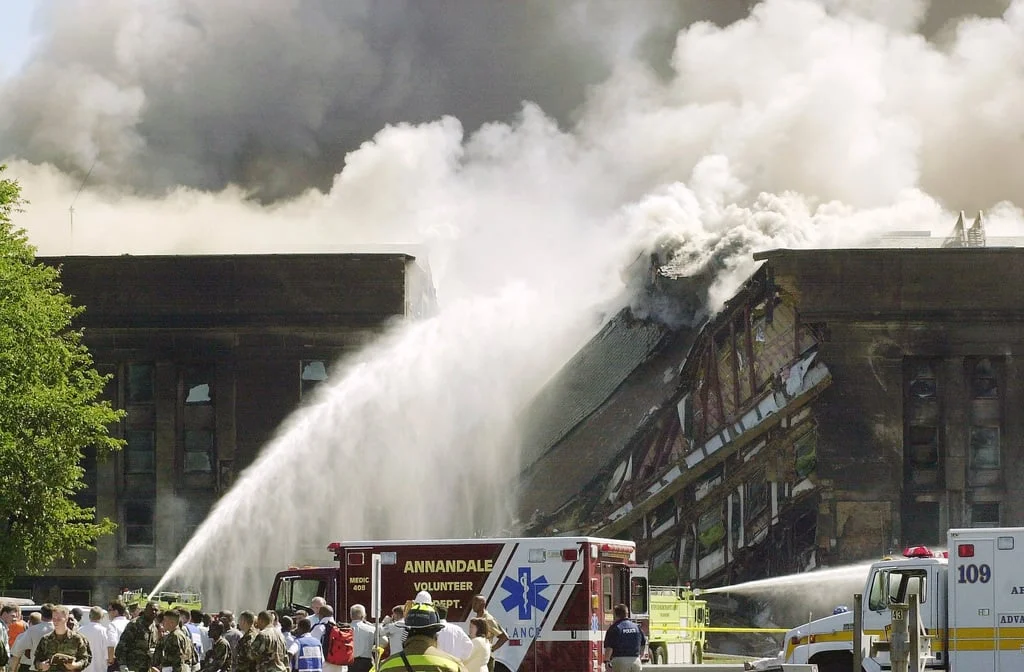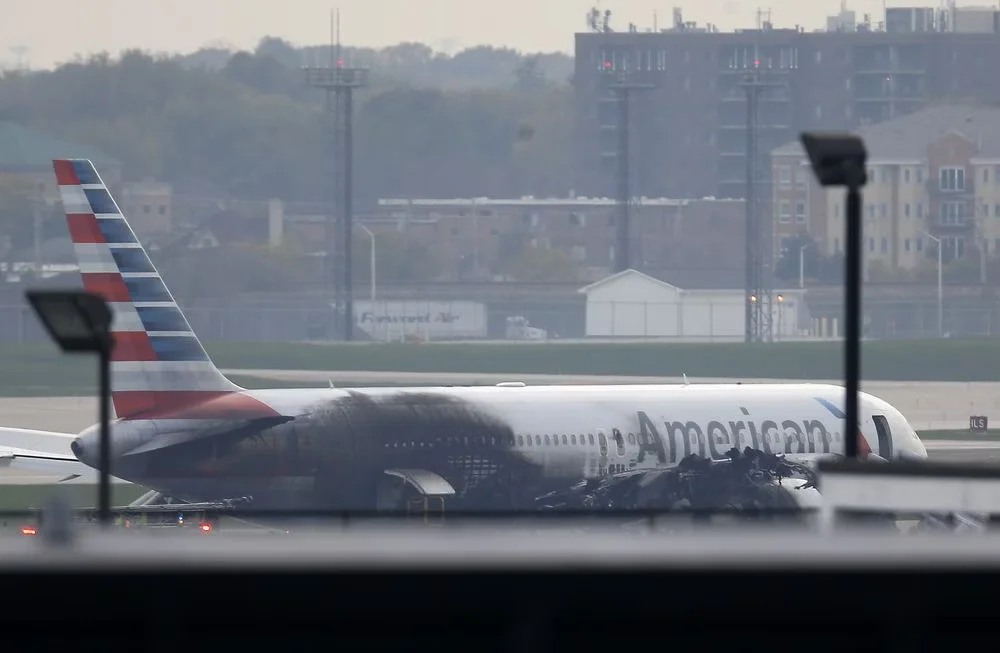On Saturday afternoon, at around 2:45 p.m. local time, American Airlines Flight 3023, a Boeing 737 MAX 8 bound for Miami, was forced to abort its takeoff at Denver International Airport.
As the aircraft accelerated down the runway, passengers heard a loud boom. Moments later, flames and thick black smoke erupted from the rear, reportedly caused by a landing gear or tire malfunction.
Air traffic control alerted the crew over the radio, warning them of the visible fire. Within seconds, the captain halted the aircraft, and emergency slides were deployed. Passengers swiftly evacuated via the front and rear slides amid a chaotic scene of smoke and urgency.
All 173 passengers and six crew members escaped safely. Five were evaluated at the scene, and one person with minor injuries was transported to a hospital.
The Denver Fire Department extinguished the blaze around 5:10 p.m., and airport operations resumed shortly thereafter.
American Airlines confirmed that the aircraft was immediately removed from service and a replacement was arranged to complete the journey to Miami.
Officials praised the quick actions of the crew and airport personnel, expressing regret for the stressful experience passengers endured.
Engine Fire Incident in March: Then and Now

This incident echoes a similar one from March earlier this year involving American Airlines Flight 1006, a Boeing 737‑800 flying between Colorado Springs and Dallas. After reporting engine vibrations, the aircraft was diverted to Denver.
While taxiing to the gate, an engine caught fire, prompting a hurried evacuation. Passengers exited onto the wing, and smoke enveloped the cabin.
Twelve people sustained minor injuries. A preliminary NTSB report later pointed to improperly installed engine parts that caused a fuel leak, likely the trigger for the fire.
What Caused the July Incident?
Early eyewitness accounts and onboard audio reveal a roar followed by visible smoke from the plane’s left rear side. Fire crews confirmed a malfunction in the landing gear or tire system caused an ignition. The aircraft never left the ground, limiting the potential for greater risk.
American Airlines engineers and maintenance teams are currently conducting detailed inspections. The FAA has opened a follow-up inquiry, and Denver’s aviation authorities have launched a full safety review.
It remains unclear whether maintenance lapses, manufacturing defects, or wear and tear contributed to the malfunction.
Why This Matters
When an aircraft fire happens before or during takeoff, instead of in midair, the risk of fatalities drastically drops, yet the event remains harrowing.
The Denver evacuations both demonstrated how crew training, swift emergency responses, and robust safety protocols can save lives.
At the same time, two serious incidents within four months involving similar aircraft models raise questions about maintenance oversight, quality control, and the reliability of aging commercial fleets.
While aviation remains statistically one of the safest modes of travel, the repetition of near-misses draws fresh scrutiny.
A Routine Trip That Named Safety Champions
Survivors from both emergencies praised cabin crew and first responders alike. Passengers noted the swift opening of exits and slides despite chaos and smoke.
Emergency crews extinguished fires in less than ten minutes, limiting damage and preventing injuries.
Passengers whose flights were diverted or flights canceled received compensation or alternate transport. American Airlines issued public apologies and reaffirmed its commitment to safety.
What Passengers Should Know Today
If you’re scheduled to fly on a Boeing 737 MAX or 737-800, reassure yourself that both aircraft types passed extensive recertification after previous scrutiny.
Airlines are required to perform routine inspections, and FAA oversight remains strong. Still, these events reinforce the importance of crew training, clear communication, and emergency preparedness.
Passengers should follow crew instructions closely during evacuations, avoid retrieving baggage in emergencies, and evacuate calmly.
Final Thoughts
Saturday’s tire or gear fire at Denver International Airport shocked many but ended without fatalities. While rare, the incident highlights aviation’s intrinsic risks, even on ground level, and the systems that work to mitigate them.
With investigations now underway, much will hinge on maintenance records, part integrity, and procedural accountability.
Meanwhile, passengers were reunited safely with replacement flights and the industry again demonstrated why airline safety, not comfort, remains the top priority.













